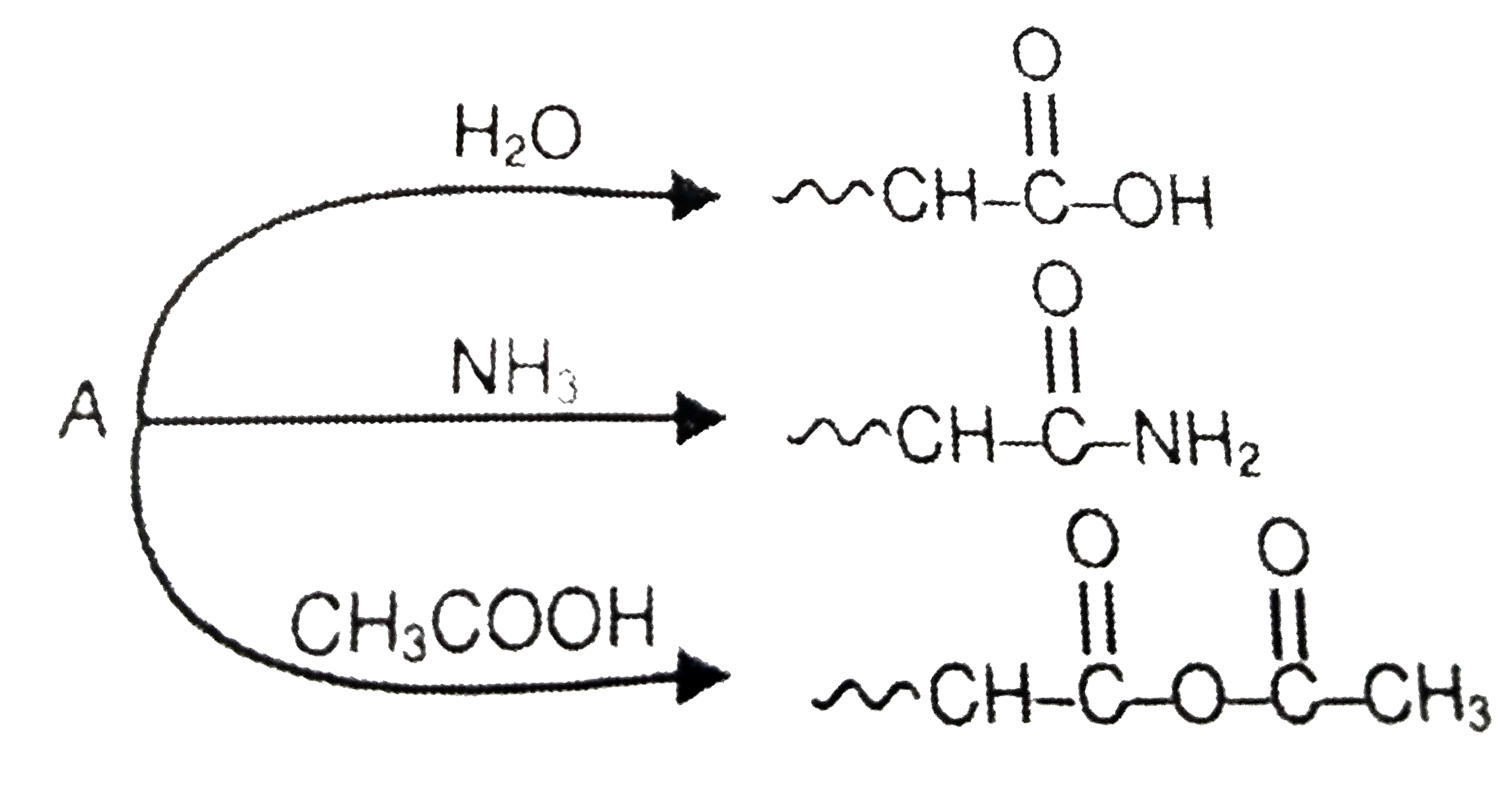An organic compound A upon reacting with NH3 gives B. On heating B gives C. C in presence of KOH reacts with Br2 to give CH3CH2NH2. A is
CH3COOH
CH3CH2CH2COOH
CH3−CH∣CH3−COOH
CH3CH2COOH
The correct Answer is:D
Step by step video & image solution for An organic compound A upon reacting with NH3 gives B. On heating B gives C. C in presence of KOH reacts with Br_(2)" to give "CH_(3)CH_(2)NH_(2). A is by Chemistry experts to help you in doubts & scoring excellent marks in Class 12 exams.
Updated on:21/07/2023Topper's Solved these Questions
- AROMATIC COMPOUNDSBOOK - RESONANCE ENGLISHCHAPTER - AROMATIC COMPOUNDSEXERCISE - JEE MAIN (Online Problem)
15 Videos
- AROMATIC COMPOUNDSBOOK - RESONANCE ENGLISHCHAPTER - AROMATIC COMPOUNDSEXERCISE - APSP (Part-I)
30 Videos
- AROMATIC COMPOUNDSBOOK - RESONANCE ENGLISHCHAPTER - AROMATIC COMPOUNDSEXERCISE - Exercise-3 (Part-I) JEE Advanced
34 Videos
- ALKYL HALIDE, ALCOHOL, PHENOL, ETHERBOOK - RESONANCE ENGLISHCHAPTER - ALKYL HALIDE, ALCOHOL, PHENOL, ETHEREXERCISE - ORGANIC CHEMISTRY(Alkyl Halide, Alcohol,Phenol,Ether)
56 Videos
- BASIC CONCEPTSBOOK - RESONANCE ENGLISHCHAPTER - BASIC CONCEPTSEXERCISE - ORGANIC CHEMISTRY(BASIC CONCEPTS)
27 Videos
Similar Questions
An orgainc compound A upon reacting with NH3 gives B On heating B give C.C in presence KOH reacts with Br2 to yield CH3CH2NH2A is .
View SolutionAn orgainc compound A upon reacting with NH3 gives B On heating B give C.C in presence KOH reacts with Br2 to yield CH3CH2NH2A is .
View SolutionBenzene reacts with CH3COCl in the presence of anhy AlCl3 to give
View SolutionOne mole of each of a bromo derivative (A) and NH3, react to give one mole of an organic compound (B). (B) reacts with CH3I to give (C). Both (B) and (C) react with HNO2 to give compounds (D) and (E) respectively. (D) on oxidation and subsequent decarboxylation gives 2-methoxy-2-methylpropane. Give structures of (A) to (E) with proper reasoning.
View SolutionOne mole of each of a bromo derivative (A) and NH3, react to give one mole of an organic compound (B). (B) reacts with CH3I to give (C). Both (B) and (C) react with HNO2 to give compounds (D) and (E) respectively. (D) on oxidation and subsequent decarboxylation gives 2-methoxy-2-methylpropane. Give structures of (A) to (E) with proper reasoning.
View SolutionAn organic compound A,C5H8O reacts with H2O,NH3 and CH3COOH as described below A is

View SolutionAn organic compound (A) C4H9Cl on reacting with aqueous KOH gives (B) and on reaction with alcoholic KOH gives (C ), which is also formed on passing the vapours of (B) over the heated copper. The compound (C ) readily decolourises bromine water. Ozonolysis of (C ) gives two compounds (D) and (E ). Compound (D) reacts with NH2OH to give (F) and compound (E ) reacts with NaOH to have an alcohol (G) and sodium salt (H) of an acid. (D) can also be prepared form propyne on treatment with water in the presence of Hg2+ and H2SO4. Identify (A) to (H) with proper reasoning.
View SolutionBoron reacts with oxygen at 700∘C to give (A). Compound (A) reacts with carbon and dry chloride to give (B) and carbon monoxide. (B) on reduction with LiAlH4 gives (C) along with LiCl and AlCl3.(C) on reaction with ammonia gives (D). Which on heating gives (E).(C) on reaction with NaH gives (F).
Compound (A) is
View SolutionAn organic compound A’ with molecular formula C7H7NO reacts with Br2/aqKOH to give compound B’, which upon reaction with NaNO2&HCl at O∘C gives C’. Compound C’ on heating with CH3CH2OH gives a hydrocarbon D’. Compound B’ on further reaction with Br2 water gives white precipitate of compound E’. Identify the compound A, B, C, D&E, also justify your answer by giving relevant chemical equations.
View SolutionA compound (C5H8) reacts with ammoniacal AgNO3 to give a white precipitate and reacts with excess of KMnO4 solution to give (CH3)2CH−COOH. The compound is
View Solution
